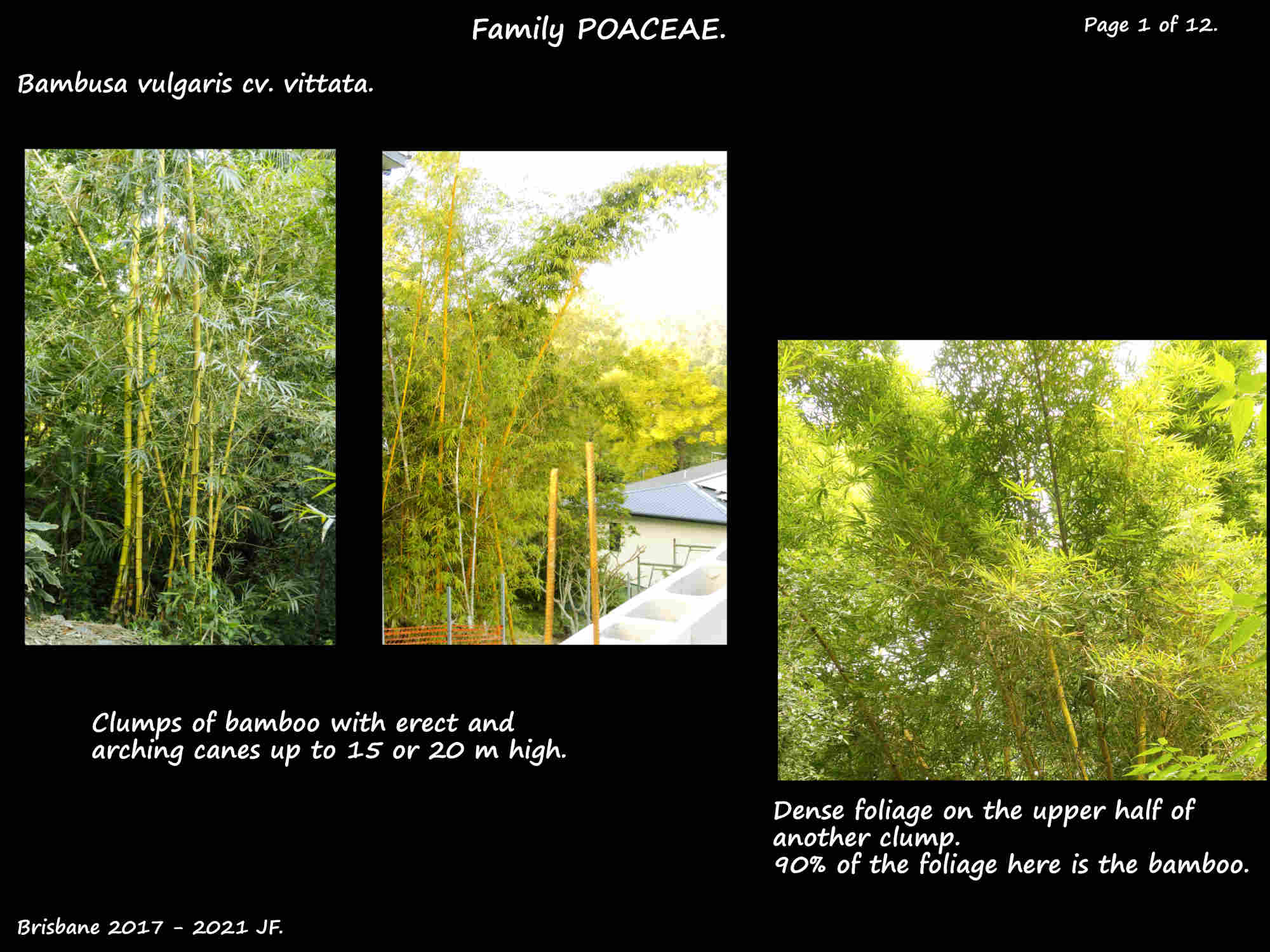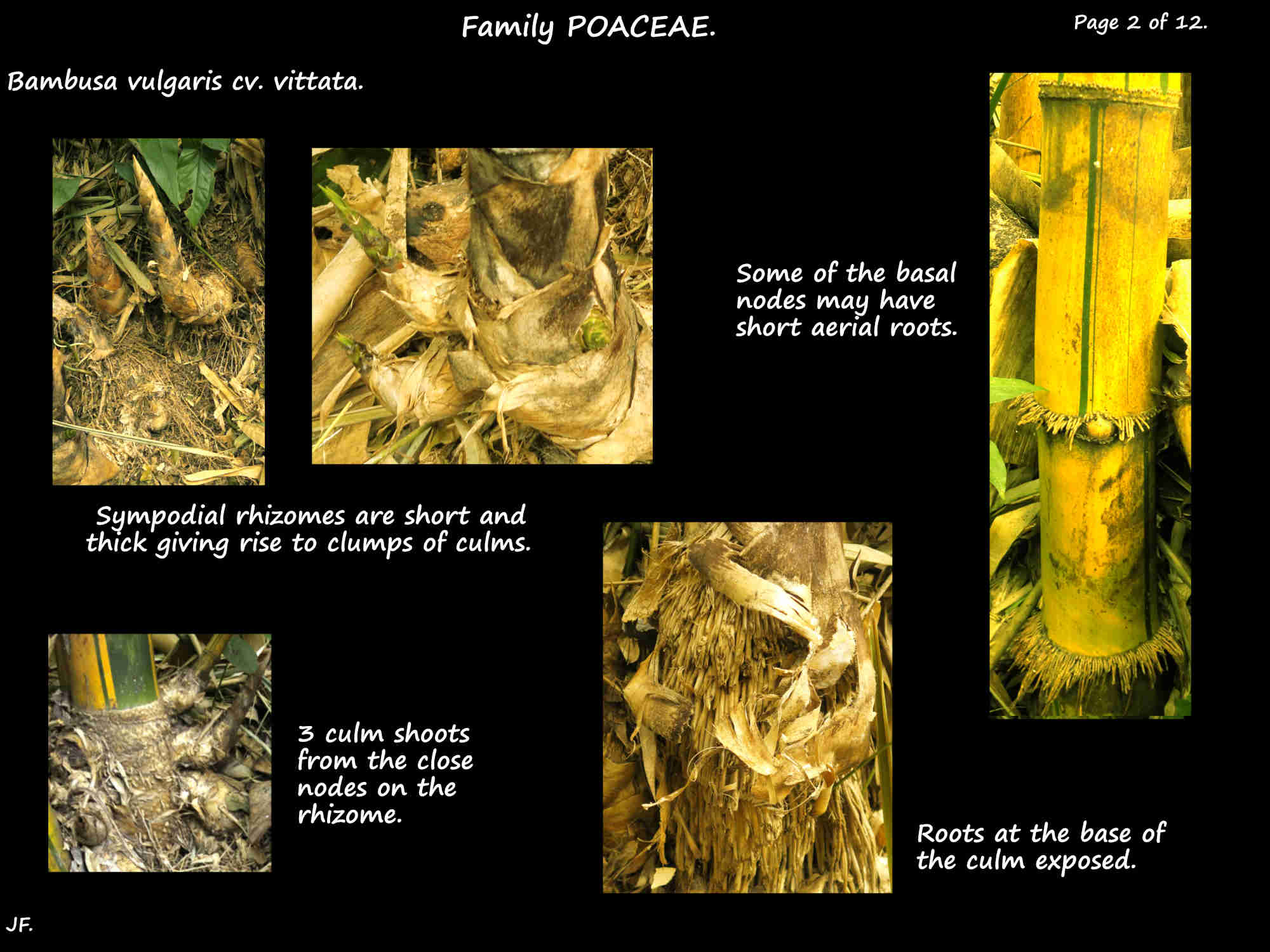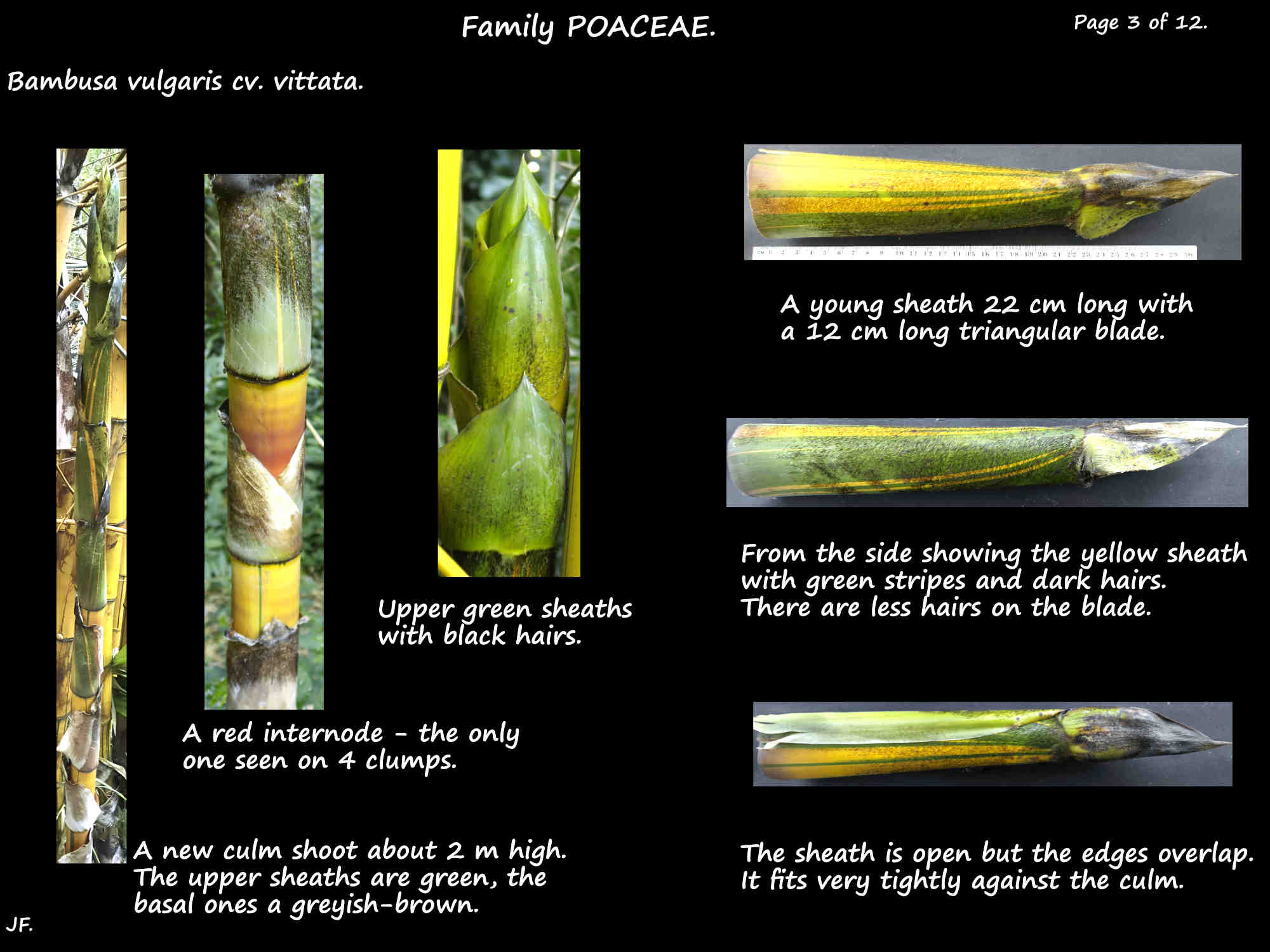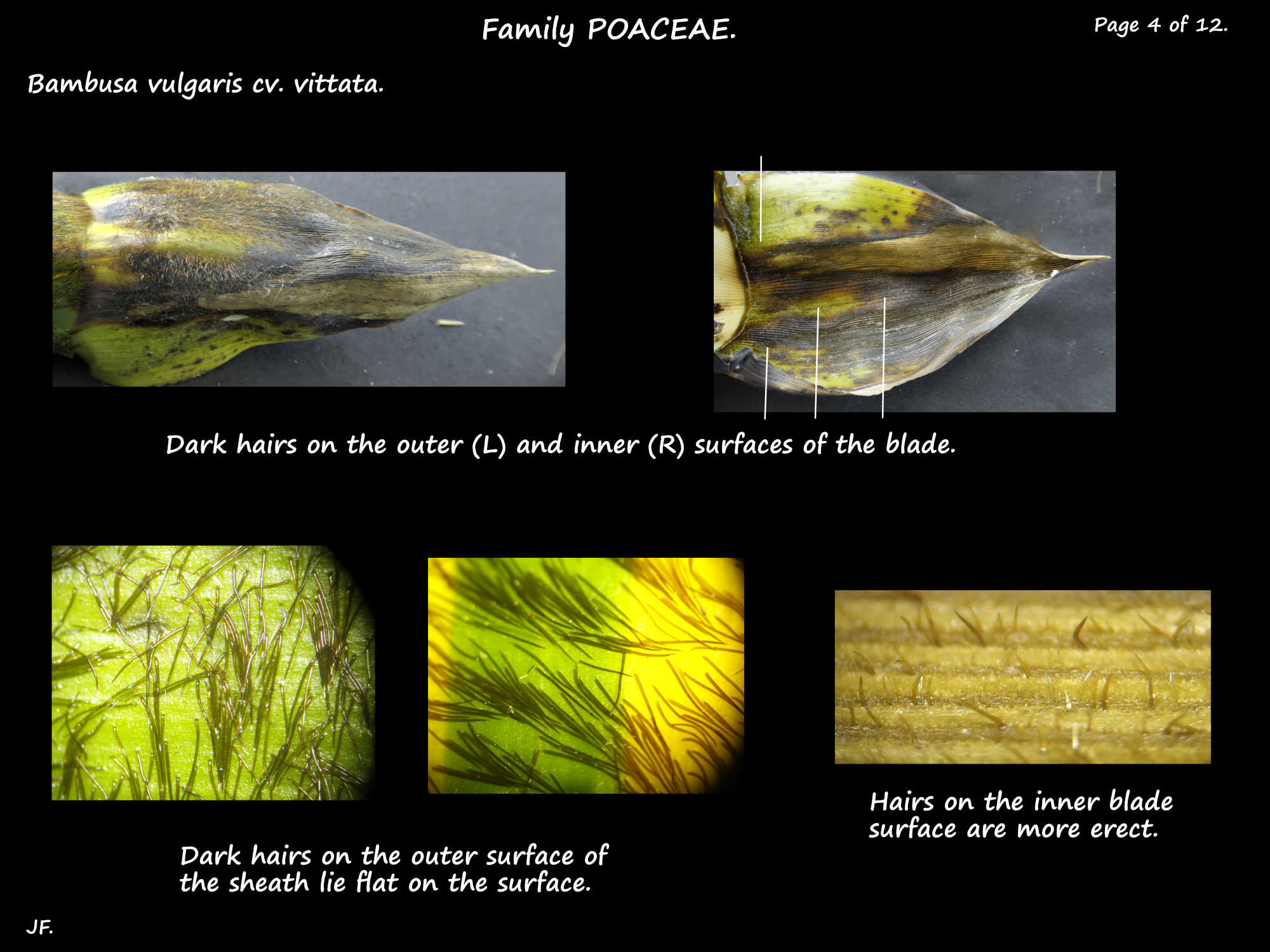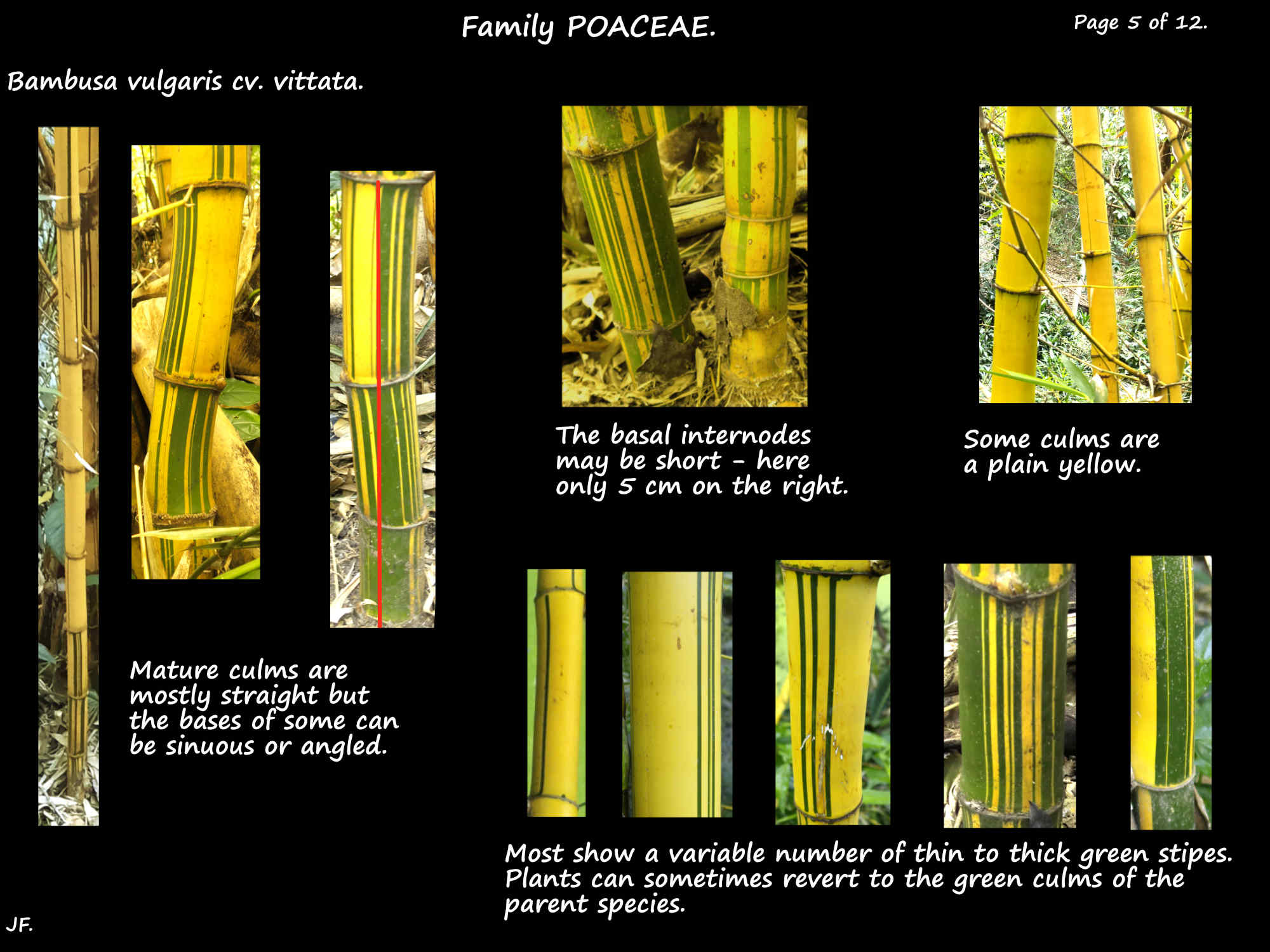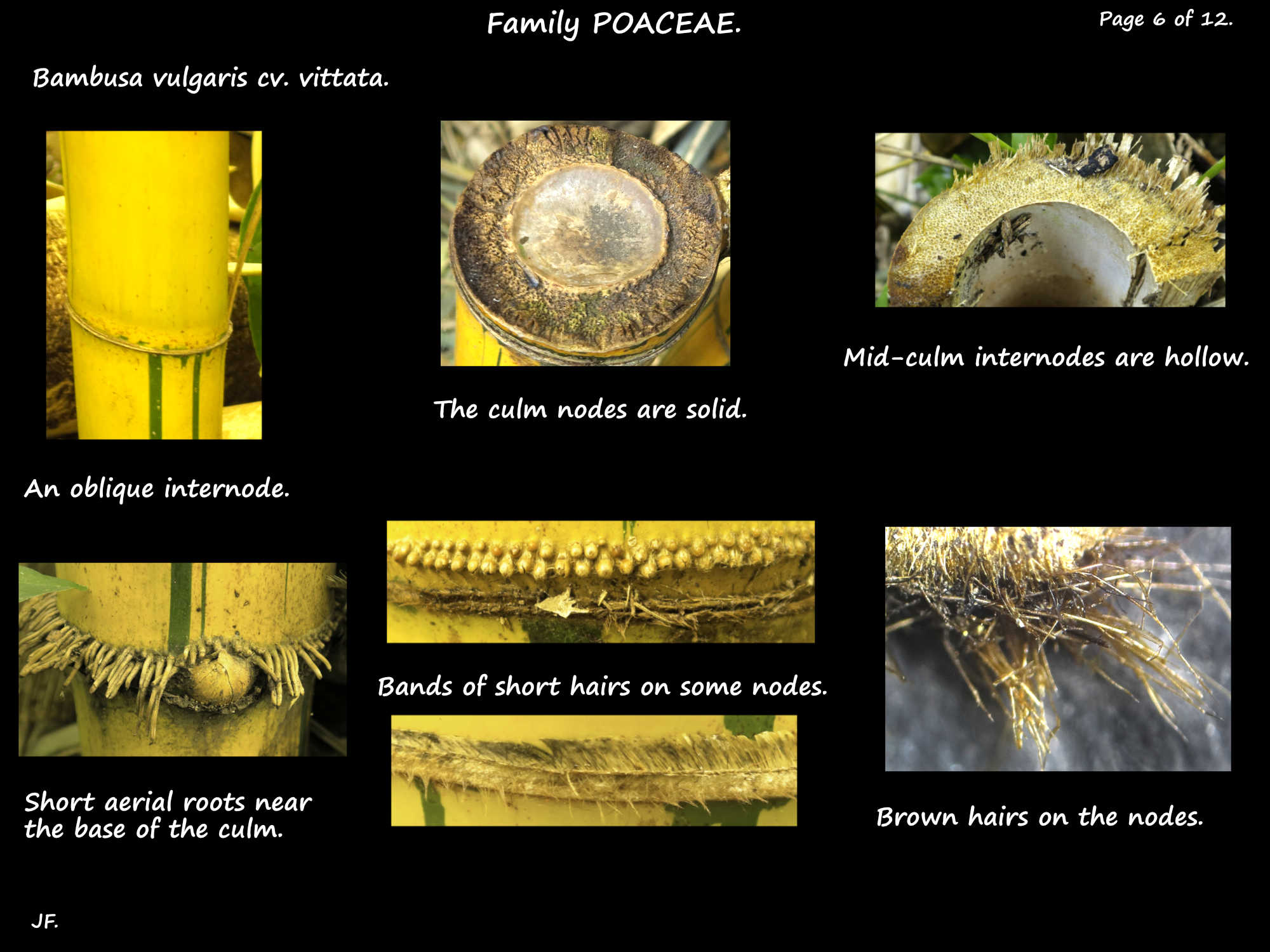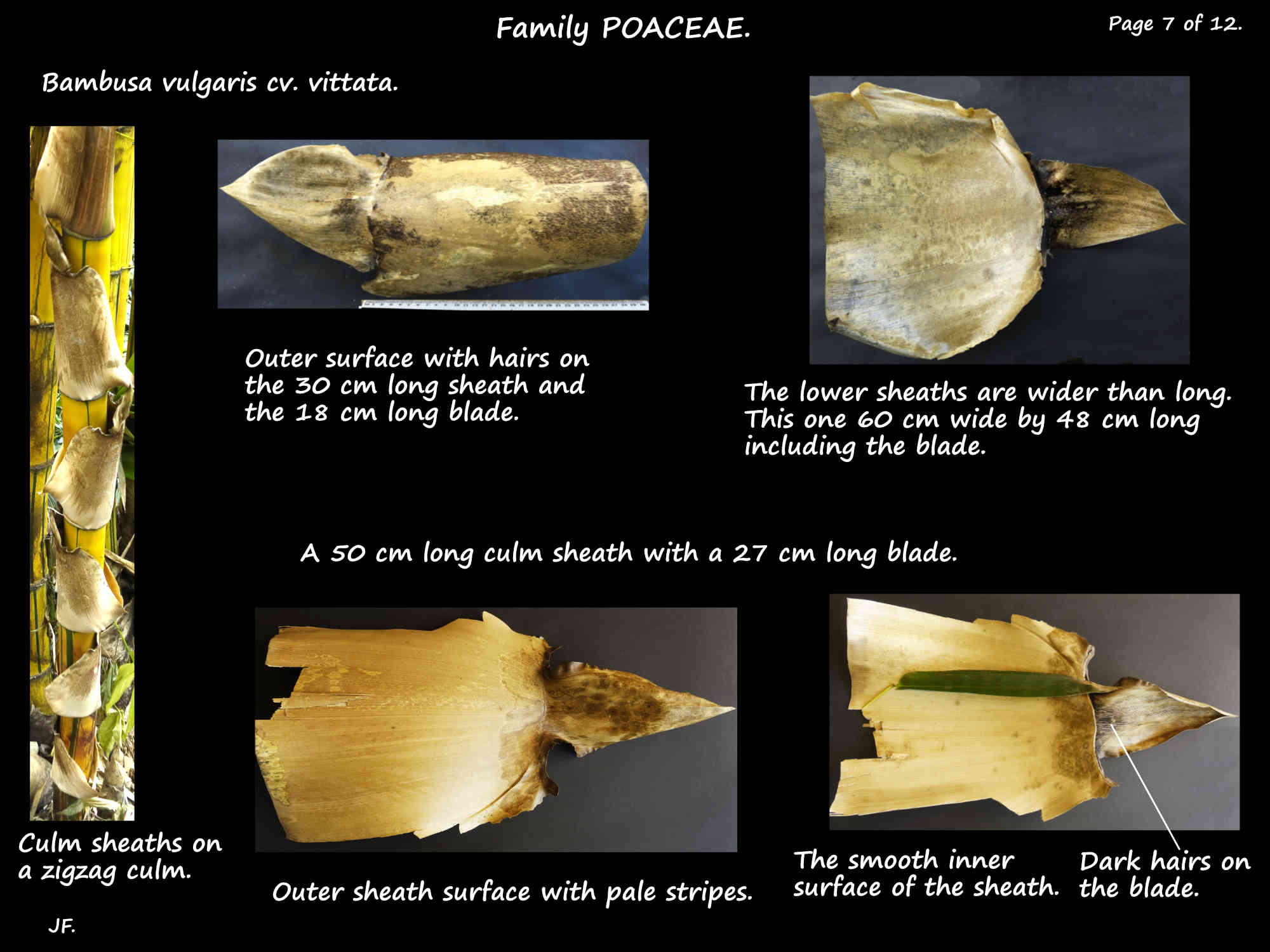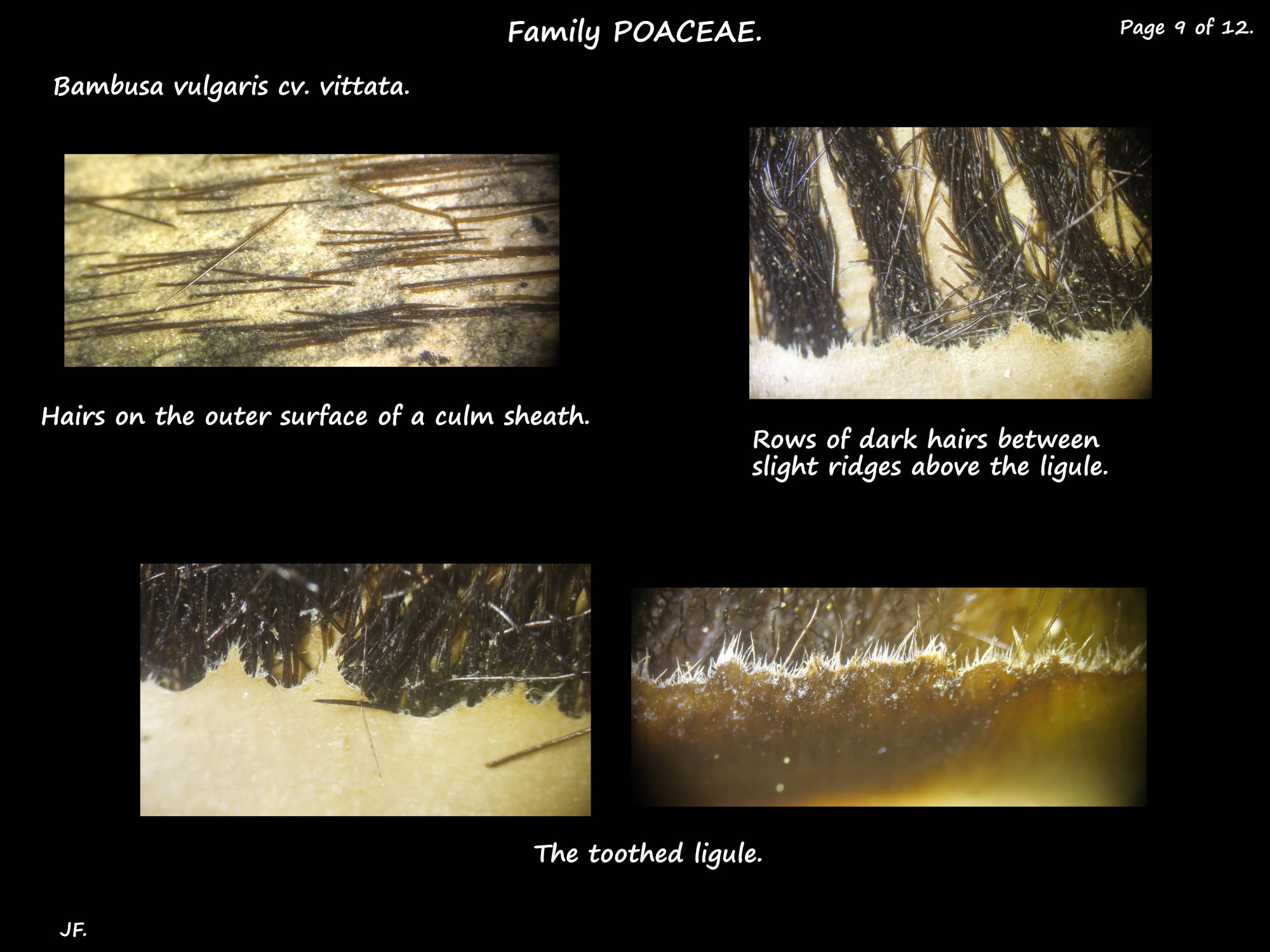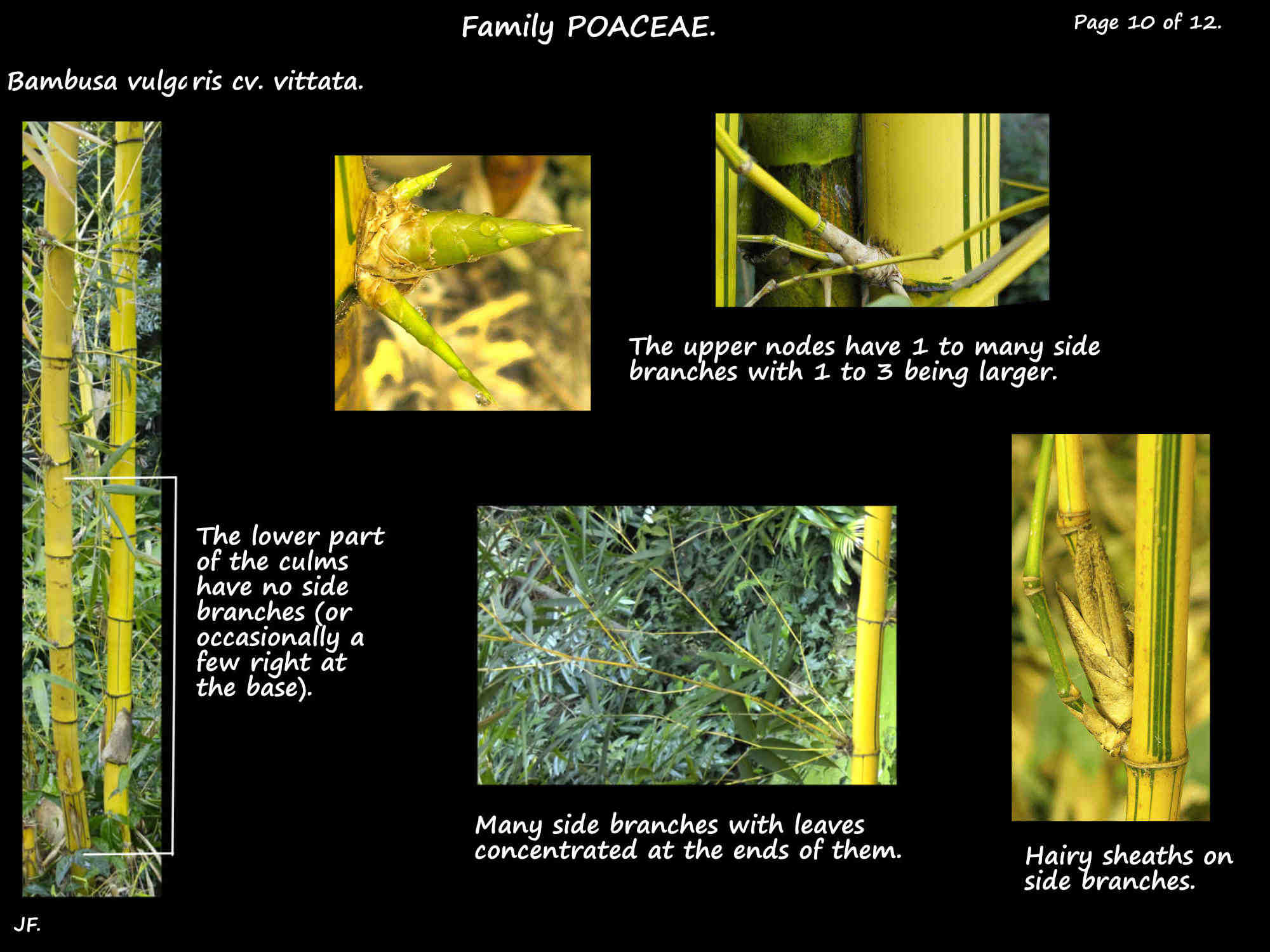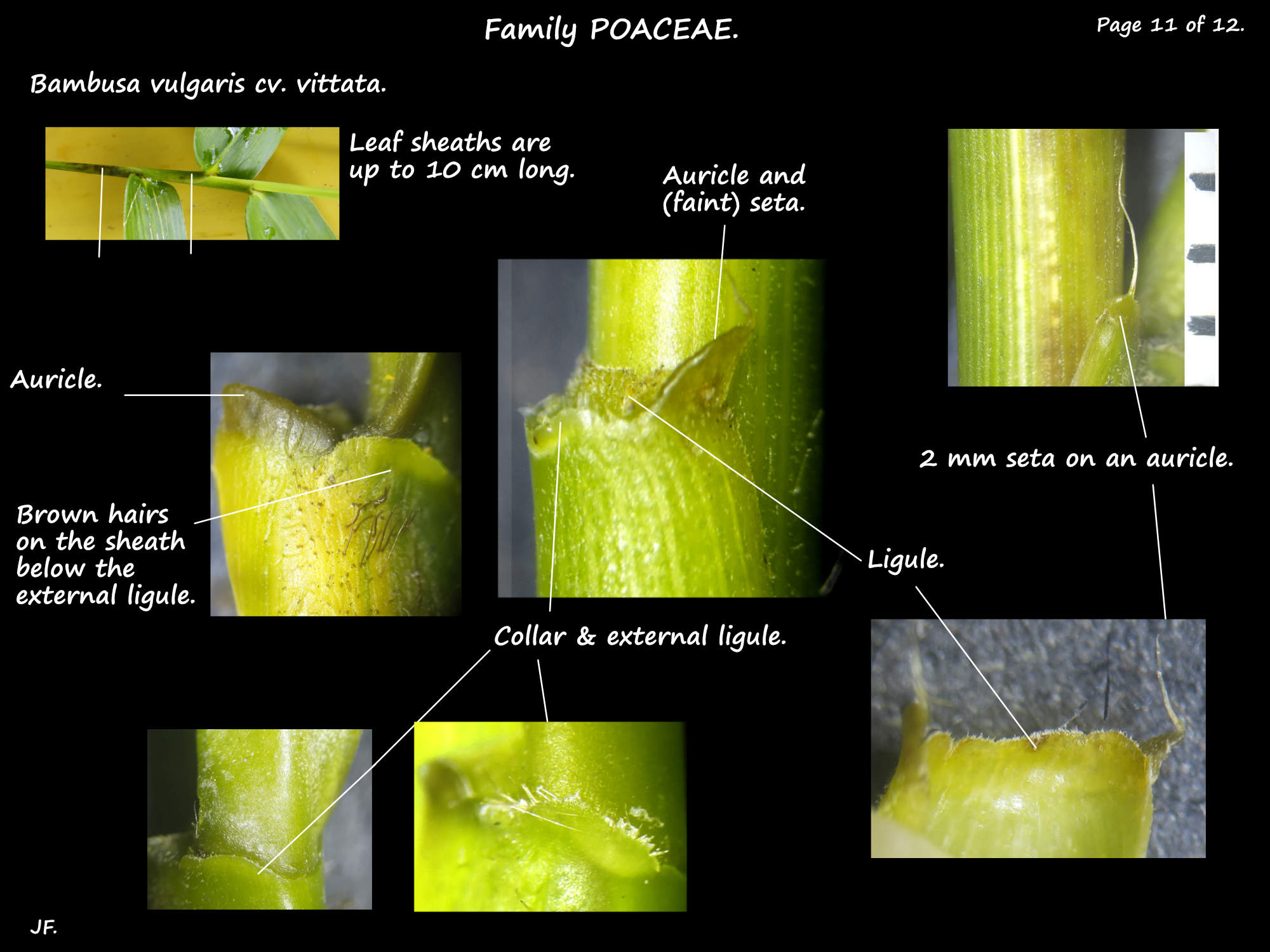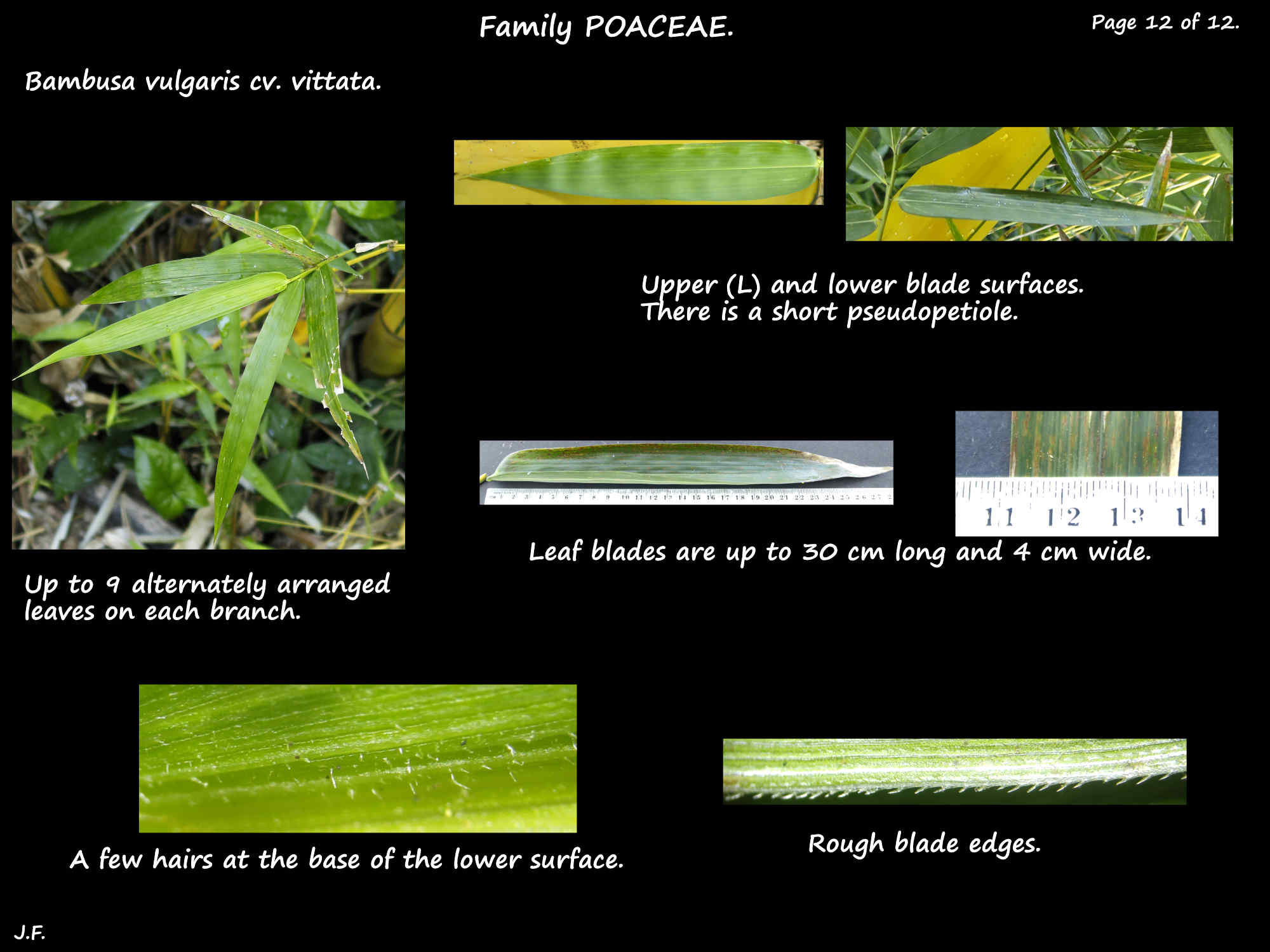Bambusa vulgaris.
Poaceae > Subfamily Bambusoideae > Tribe Bambuseae.
Common or Yellow-stemmed bamboo, also known as Bambusa striata probably originated in Asia.
It has been widely grown in Queensland.
Short thick sympodial rhizomes give rise to tight or loose clumps of culms.
The woody culms are erect with arching tops.
One of the tallest bamboos they can reach 15 to 20 m in height and up to 10 or 12 cm in diameter.
Most culms are straight but some are sinuous while others have a zigzag appearance.
Mature culms are a glossy green without any waxy bloom.
The cylindrical internodes are 20 to 40 cm long but the basal ones on some culms may be much shorter.
The mid-culm internodes are hollow and the nodes are solid.
The slightly swollen nodes are typically straight but may be oblique.
Some of the basal ones may have aerial roots.
Higher nodes have a narrow band of brown hairs while others just have a leaf scar.
Deciduous culm sheaths protect the developing branches and leaves.
They are up to 45 cm long and 35 cm wide with sheaths near the base being wider than long.
Green when young they become dry and pale brown.
The dense dark brown hairs on the outer surface and the edges gradually wear off.
The culm sheath blades are ovate to triangular and up to 15 or 18 cm long.
The blade narrows towards the base and the tip is pointed.
There are dark brown hairs on the both surfaces but those on the outside wear off.
The ligule is a slightly toothed membrane around 2 mm high.
The curved auricles, equal in size, are up to 5 cm wide and 2 cm high.
They have pale brown setae up to 8 mm long.
The lower half of the culms usually have no side branches but there may be some at the base.
Nodes above the upper half of the culms each have 1 to many branches.
There may be one to three larger dominant ones.
Each branch has up to 9 alternately arranged lanceolate leaves on a short pseudopetiole.
Blades, up to 30 cm long and around 4 cm wide, may have a few hairs at the base.
Leaf sheaths are up to 10 cm long with brown hairs on the outer surface.
The curved auricles are 1 to 2 mm high with a few bristles up to 3 mm long.
The ligule, slightly toothed but without hairs, is up to 1.5 mm high.
There is a collar and an external ligule.
Flowering is rarely seen in cultivation and reproduction is via the rhizomes.
The long branched inflorescences have basal bracts and spikelets 2 to 3 cm long.
The spikelets have 2 basal glumes, up to 10 or 12 fertile florets and some sterile ones at the tip and base.
The glumes, lemma and palea have no keels or awns.
There are 3 lodicules with hairs, 6 purple stamens that extend past the lemma and palea, an
elongated ovary with hairs and a single style with 2 or 3 feathery stigmas.
Even when they do flower no seeds develop.
Bambusa vulgaris vittata.
Golden Common or Painted Bamboo is also seen as Bambusa vulgaris striata.
It is identical to Bambusa vulgaris apart from having yellow culms that may have green stripes.
The branches may also show the green stripes.
Bambusa vulgaris ‘Wamin’.
Dwarf Buddha’s Belly bamboo only grows to 3 or sometimes 5 m high.
Despite being the shortest of the Buddha’s Belly bamboos it is sometimes sold as Giant Buddha’s Belly.
The slightly arching culms have swollen internodes with no aerial roots.
Culms internodes are up to 10 cm long and 3 cm wide.
The culm sheaths have dense hairs on the outer surface and large auricles.
J.F.
